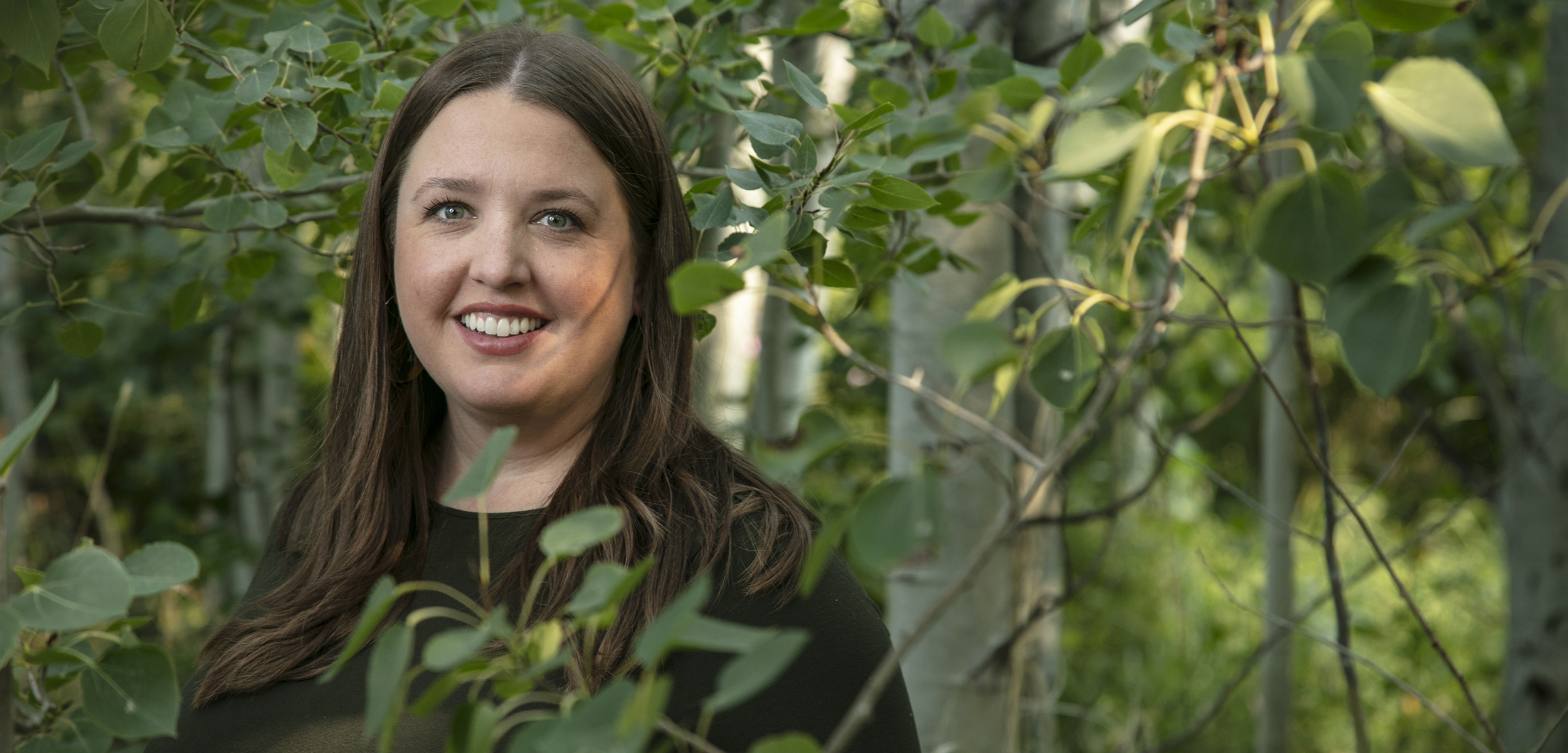
In 2019, CWU took a major step toward coordinating its university-wide sustainability efforts when it created a centralized sustainability leadership position to oversee various individual initiatives that were previously scattered across campus.
Kathleen Klaniecki was hired as the university’s sustainability coordinator in January 2020, and she immediately begin helping CWU start the process of reducing its carbon footprint and demonstrating more environmental responsibility. Over the past year and a half, Klaniecki—who holds a PhD in sustainability science—has successfully bridged the many sustainability efforts taking place on campus and created a comprehensive plan to guide CWU’s efforts in the future.
Crimson & Black recently sat down with Klaniecki to ask her about CWU’s approach to environmental issues, sustainability initiatives, and the general reduction of our collective impact on our ecosystem, economy, and society.
••••••
Crimson & Black: What is sustainability’s role at CWU? Why is it such a large part of our university’s identity?
Klaniecki: Sustainability is a strategic initiative at CWU and it has been integrated into the fabric of our university for many years. Faculty have used the campus as a living laboratory, students have mobilized their peers and raised awareness about environmental issues, while staff continue to advocate for more sustainable practices in their workplace.
As an institution of higher education, CWU is committed to developing and implementing sustainability initiatives that will make a real difference and build a better future. We are a campus community that cares—we want to contribute positively to our local community, we want to empower students with the skills to solve pressing environmental challenges, and we want to minimize the environmental impact of our actions.
The integration of sustainability as an institutional priority has occurred in two phases. In 2007, former President Jerilyn McIntyre signed The American College & University Presidents’ Climate Commitment, appointed a Climate Commitment Task Force, and committed CWU to achieving carbon neutrality and preparing sustainability-literate graduates. The university also appointed a carbon reduction coordinator and a sustainability coordinator at that time.
That commitment was reinvigorated over the last few years with the creation of Sustainability Cafes, the completion of the AASHE STARS certification, the launch of the Sustainability Certificate, the development of the Wildcat Neighborhood Farm, and the hiring of a full-time sustainability coordinator and a full-time farm and sustainability manager.
••••••
C&B: What steps have already been taken to reduce CWU’s environmental footprint? Are there any initiatives in the works?
KK: Each member of the CWU community has an opportunity to contribute to building a more sustainable future. We’ve seen individuals and departments step up and implement sustainability initiatives, and we’ve advanced sustainability discussions among academic departments, campus operations, and administrators. Recent accomplishments of note:
Operations:
- Partnering with Mid-Columbia Fisheries Enhancement Group to plant native species in the riparian areas of Wilson Creek.
- Becoming a certified Tree Campus Higher Education campus for our commitment to campus trees.
Academics:
- Implementing the Sustainability Certificate for any degree-seeking CWU student interested in learning the principles of sustainability and who wants to plan and implement a campus sustainability project.
- Launching the Provost Fellows for Sustainability initiative to further integrate sustainability principles into curricular and co-curricular activities.
Engagement:
- Launching a sustainability peer educator program to lead sustainability education and outreach programs.
- Adding the Senator for Sustainability position to the ASCWU.
Planning and Administration:
- Launching the Council on Investor Responsibility to analyze CWU’s investments according to ESG criteria.
- The Sustainability Council continuing to provide guidance and recommendations for sustainability initiatives on campus.
Our work has just begun. We will continue to build on the progress we have made toward a more sustainable future, and we remain committed to making our community and the world at-large a better place to study, live, and work.
In 2022, we’ll engage the campus community in the development of the university’s first Sustainability Strategic Plan. This document will build on our sustainability progress and establish a long-term vision for sustainability, with goals and milestones for climate action, sustainable operations, and curricular and co-curricular engagement with sustainability topics.
We are seeking broad representation from faculty, staff, students and alumni in the strategic planning process. This is an opportunity to shape the next five years of climate action and sustainability at CWU. Anyone who would like to provide their insight can participate at cwu.edu/sustainability/plan.
“Today’s students are demanding that their universities take positive action toward achieving sustainability goals.”
—Kathleen Klaniecki
C&B: What kinds of architectural decisions have been made around the CWU campus to improve sustainability?
KK: When Dean Hall was renovated in 2008, it became CWU’s first LEED-certified building on campus. It received a Gold certification for its sustainable design and construction features, including energy-efficient lighting, water-conserving fixtures, waste diversion efforts, and native landscaping.
Since then, CWU has constructed three more LEED-certified buildings on campus, including the Hogue Technology Building (Gold), Barto Hall (Platinum), Discovery Hall (Gold), and Samuelson Hall (pending). In addition, the new Health Sciences Building is being built to meet Gold certification and features a 9,500-square-foot solar PV array on the roof and multiple electric vehicle charging stations.
Across campus, we’ve installed bike racks to promote active transportation, bottle-filling stations to encourage reuse, and recycling bins to encourage waste diversion. In addition, Tree Zero paper can be found in campus printers, compostable containers in dining facilities, and LED lightbulbs in fixtures across campus.
••••••
C&B: How successful have these measures been in reducing our energy consumption and waste output?
KK: While CWU has seen an increase in its building square footage since 2000 with the addition of several new state-of-the art academic and residential buildings, our consumption of natural gas has decreased during this time. This is attributed to energy efficiency projects being implemented across campus, construction of more energy-efficient buildings, and the 2015 installation of a waste heat recovery system that allows Samuelson Hall and Discovery Hall to be heated without burning additional natural gas.
We still must make significant progress to meet Washington state Greenhouse Gas (GHG) reduction regulations and bring our actions in line with current climate science. This will require buy-in from stakeholders across campus, shifts in transportation and consumption behaviors, and a commitment to lowering energy consumption and shifting to renewables.
••••••
C&B: Where do you see the global conversation about sustainability heading within the next few years? Will that have any impact on how we approach it here at CWU?
KK: In the 10 years since I entered the field, there has been a significant shift from simply raising awareness of environmental topics to focusing on GHG emissions reductions and mitigating climate impacts. Due to accelerating climate change and lack of significant action by government and businesses to slow emissions, we’re facing a shortening window of time to avoid the worst impacts of climate change.
At CWU, this means continuing our commitment to equipping students with the knowledge and skills to contribute to solving national and global challenges, ramping up our efforts to reduce our GHG emissions, and further developing partnerships to increase our impact in our region and state.
We’ve also seen recycling markets collapse as countries refuse to import more waste. This has shifted the conversation from “what can we recycle?” to “how do we produce less overall waste?” This gets us talking about sustainable consumption and production patterns, which leads us to more systemic changes and more impactful outcomes.
Sustainability is about human connection, strong communities, and a shared belief that we can do better and contribute to a better future for all.






comments powered by Disqus